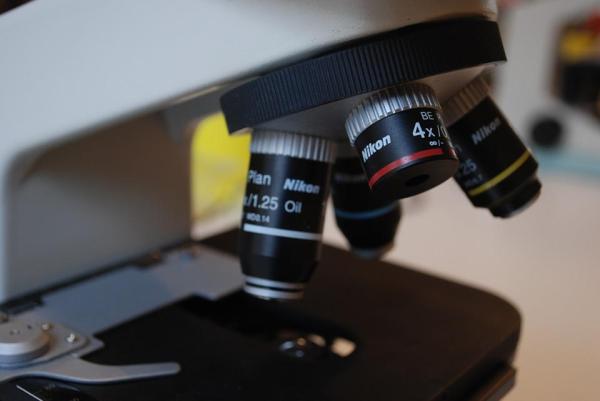
Filariasis is a parasitic disease caused by the dirofilaria immitis, otherwise known as the heartworm. This condition is spread through a parasitic roundowrm that is shared through hosts, i.e. mosquitoes. Heartworm is incredibly dangerous, this is because the adult form of this parasite install themselves in the right hand site of the heart. Therefore, not only is their removal complex, but they can cause considerable damage to a dog’s organism.
Therefore, if you assume or notice your dog might be suffering from Filariasis, it is incredibly important to go to your veterinarian as soon as possible. This disease however, can and should be prevented at all costs. This is why, in this AnimalWised article, we aim to tell you everything you need to know about Filaria in dogs, including its symptoms and treatment.
Heartworm in dogs
Filariasis in dogs, as mentioned before, is transmitted by a mosquito bite. These worms then lodge themselves in the heart and lungs of a dog, with the ability of causing heart failure or even death. Heartworm in dogs is a widespread parasite prevalent in the world, however, its level of contagion differs from every country. Dogs that live outside of homes are more prone to catching this disease.
When a filariasis infested mosquito bites a dog, the larvae of a filariasis is then lodged into the dogs skin. From there, the larvae undergoes several modifications before hitting maturity. Depending on how far into this phase of filaria the dog is, the disease can be treated by a veterinarian.
In the next stage, immature worms reach the bloodstream and travel until they find themselves in a heart cavity, such as the: right ventricle and pulmonary arteries,. Here, they continue their maturation process. When the worm capacity is very high, they have the capability of travelling to the the right atrium, even venae cavae and/or hepatic veins. This infestation in the pulmonary arteries can affect a dog’s circulation, obstruct blood flow and form clots.
Blockage or blood clots in the heart can result in "pulmonary thromboembolism" and can lead to heart failure. In addition, if heartworms near heart valves, they can interfere with heart’s functioning. This interference can result in valvular disease. The presence of worms in the vena cavae or hepatic veins can prompt the presence of vena cava syndrome. This syndrome causes hepatic failure that can occur hand-in-hand with: jaundice, ascites or anemia.
It takes these worms approximately 6 months to mature into adults. These adults can reach a length of 30 centimeters and live for several years. Females worms generate microfilariae. These micrifilariaeare able to survive in a dog’s circulatory system for years.
Heartworm in dogs: symptoms
The clinical manifestations of filariasis in dogs will depend on the size of the dog and the number of worms that are present in this infestation. A maximum number of heartworms are needed for symptoms to be visible. If a dog is suffering from a low infestation count, symptoms of heartworm may not appear.
Signs of heartworm in dogs include:
- Fatigue
- Lack of predisposition when it comes to physical activity
- Thinning
- Coughing
- Accelerated breathing
- Fainting, especially before exercise
- Dogs with liver or lung involvement may suffer a collapse and death
Heartworm in dogs: prognosis
If a dog has is experiencing any of these symptoms and currently lives in an area where heartworm is common, you should assume that heartworm disease is a highly likely diagnosis. If this is the case, we recommend going to your veterinarian as soon as possible for a secure diagnosis.
In addition, a veterinarian will most likely, other than blood test, perform a radiography test. This test will show any possible damages that the parasites have caused in the heart and lungs of the dog. This will allow a vet to understand the severity of the condition.

Heartworm in dogs: treatment
Are you wondering how to treat heartworm in dogs? The treatment of filariasis in dogs will depend on the state of the animal and the degree of the infestation. Once a veterinarian has performed the appropriate tests, a vet can confirm whether the heartworm infestation is high or low risk:
- Low risk: would correspond to dogs with low parasitic presence and no further injuries. Normally, this stage doesn’t present symptoms and they do not present other diseases. A radiograph will be normal and filarias might not be observed in examinations.
- High risk: are dogs that have symptoms and alterations in their radiographic examination. Parasites are observed and there are concomitant diseases.
In both cases, treatment must be administered under strict veterinary control. The life cycle time of the filaria must be taken into account. In this treatment, a vet will aim to eliminate the presence of the adult filariasis rapidly to avoid the risk of thromboembolism. For the same reason, physical activity during this time might be restricted.
There is also a possibility that worms can be extracted through surgery. Months after treatment, a dog should always be retested to ensure that the infestation has been completely cleared.
Heartworm in dogs: prevention
We have already seen that filariasis in dogs can cause serious and deadly consequences and diseases. For these reasons, knowing how to prevent heartworm in dogs is very important.
There are several products on the market that can be used to prevent the appearance of worms. These products aid in the prevention of the development of larvae. It is incredibly important that you follow your dog’s deworming schedule strictly from when it is a puppy.
It is important to consult a veterinarian before you choose an appropriate deworming schedule for your animal. Ideal prevention would also include mosquito control in your home, as they are the parasite hosts. Although this aspect is somewhat impossible, you can follow some preventive measures, such as: avoiding late-night walks (especially in summer), since that is when mosquitoes are more prevalent.
If your dog lives outside, we recommend keeping it inside during high mosquito presence months, i.e: summer. Do not forget to deworm your dogs both externally and internally and, if you consider it convenient, use a homemade mosquito repellent for dogs.

Is heartworm in dogs contagious?
You may be wondering, is heartworm in dogs contagious to other dogs? Well, as we have seen, filariasis in dogs needs the intermediation of a mosquito in order to develop. This means that a dog cannot, alone, infect another animal.
Heartworm can also only be transmitted, by mosquito, from animal to animal. Heartworm is not contagious and therefore heartworm cannot be transmitted from a dog to a human.
This article is purely informative. AnimalWised does not have the authority to prescribe any veterinary treatment or create a diagnosis. We invite you to take your pet to the veterinarian if they are suffering from any condition or pain.
If you want to read similar articles to Heartworm In Dogs - Symptoms, Treatment And Prevention, we recommend you visit our Parasitic diseases category.